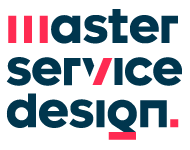The Ikea Effect:
I’m sure many of us are familiar with Ikea. It is a store for semi-assembled furniture, you buy it and you assemble the rest of it yourself. A few years ago I bought a piece of furniture from Ikea. It was a desk for my niece, nothing particularly high quality or anything great, it was an average desk. I’d also like to include that I’m not that great at assembling things and I never exactly understand the instructions as a consequence of which I had to spend the whole afternoon, maybe even the evening to put it together. I made a lot of mistakes, I put the wrong pieces, I took things apart and there were some screws I could not find the right instructions for and so on. Anyway, it wasn’t a good afternoon.
But what I found later was that I kind of fell in love with that particular desk and I kept on carrying it with me while I moved which I did quite frequently then. Last night I was thinking fondly about the desk and thinking back about how many hours I had spent working on it. I should point out that I wasn’t misremembering the agony of building it, instead I seemed to like it more. And I started thinking about labor and love.
What are the cases in which putting effort into something makes you love it to a higher degree? Does labor lead to love? Does putting effort into something make you love it to a higher degree? If so how does it affect us service designers?
The Egg Theory:
Upon doing some research, I dug up an interesting example. When people started making cake mixes, they had the idea that house wife’s would love it, there were already all kinds of mixes in the market like pie crusts, muffins and so on. So why not cakes? But reality was that people did not like the cake mixes, they were just not desirable. The first thought was that maybe the taste was not good, but no-the taste was great
…and then they came up with something they called the egg theory. The egg theory was the idea that if you take powder and you mix it with water and put it in a pan and bake it – you can’t really take credit for it. It is not yours in any way…now in the case of piecrust, if you made a pie with it, you still made the whole pie, if you make biscuits or muffins – they’re still part of the whole breakfast. But a cake is a whole dish, it a final dish of the meal. So of a sudden you basically are saying that this is not mine. It’s like putting a can of something, pouring it in and serving it to your guest. What the egg theory did was to take the egg and milk powder out of the mix and have people add the essential ingredient themselves instead of just water. Voila! All of a sudden the cake mix got popular.
 Observing from the experience and the story above I note:
Observing from the experience and the story above I note:
Our liking for something is determined not just by what it is but also by how much effort we put into it. Simply put, when you work on something, you make it yours, you start owning it and you love it. I can love/hate my job, but I will always love my solutions and ideas. However, there is a subjective truth and then there is reality. What we as service designers should strive to do is to realise the connection between labor and love and then disassociate ourselves from our suggested solutions to test it free of bias and favor. We already use tools such as personas and story telling to empathize with the user, what we should also do is to critically evaluate our own solutions from a 3rd person’s point of view- someone who is viewing it from a competing perspective even? Someone who will pick out faults and flaws that our beloved solution may have.. This will only burnish our work to the final step and take us into the prototyping stage with all 3 bases covered- user, competitor, and service designer.
—
Credits: Predictably Irrational by Dan Ariely. Link: http://www.amazon.com/Predictably-Irrational-Revised-Expanded-Edition/dp/0061353248


